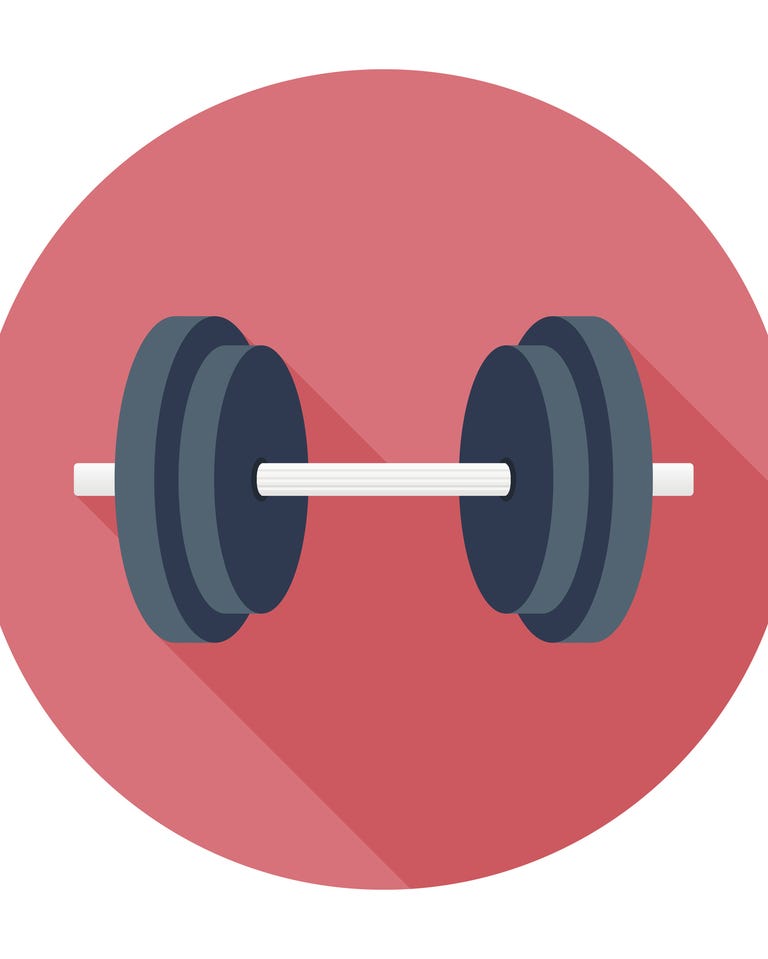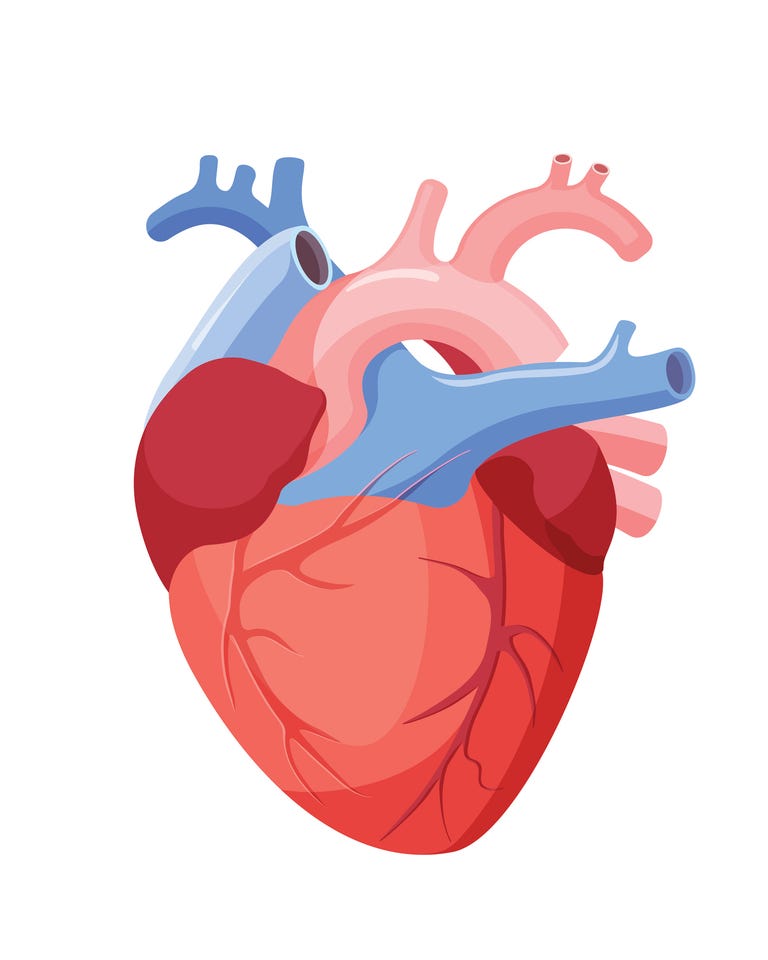
You know that girl on the elliptical who sticks it out for an entire episode of This Is Us, slogging away at the same pace for the whole thing? (Maybe you even are that girl…?) Welp, sorry to break it to her (you?), but she could be spending a lot less time in the gym each week and seeing even better results, thanks to something called HIIT (a.k.a. high-intensity interval training—and, yup, it’s pronounced “hit”).
The technique doesn’t require fitness influencer-level skills, either: you can do HIIT with any workout, as long as you’re mixing up short, intense bursts of activity with less hardcore moves or complete rest in between.
Still not convinced you should give it a try? Allow me to change your mind…

Getty Imagesilyast
Who wouldn’t love a workout that’s more efficient? HIIT burns 25 to 30 percent more calories than resistance training, cycling, and treadmill running, according to a study published in the Journal of Strength and Conditioning Research. “When you’re in a moderate, low-intensity exercise state—an aerobic state—your body can keep up with the amount of activity it’s being asked to do,” explains Jacque Crockford, C.S.C.S., ACE-certified trainer. “But with HIIT, you’re asking more and more and more from your body, and that comes with a lot of extra calories burned.”
In addition to burning more calories, HIIT workouts also help you burn more fat in less time than endurance activities, says BJ Gaddour, C.S.C.S, author of Your Body is Your Barbell. That’s because it causes your body to start burning fat for energy instead of carbs, research published in the journal Sports Medicine Open shows.
And in a study in Journal of Obesity, doing three HIIT workouts a week for 20 minutes each helped participants lose 4.4-pounds of body fat in 12 weeks.
Of course, burning fat and calories in a sweat sesh is great, but a metabolism that keeps on revving is key to staying trim. When you do a “sustainable” exercise, like going on a long run, your body uses less oxygen than when you push yourself to the max, as you do during HIIT.
And when you work out to the point where it’s difficult to breathe (because your body is using more oxygen), your metabolism starts working at a higher level, which helps you burn more calories even after you stop exercising, says Jordan Metzl, M.D., an exercise physician and author of The Exercise Cure.
A study published in the journal Sports Medicine Open shows that HIIT actually increases your metabolism post-exercise even more than jogging and resistance training. “After exercise is over, when we’re trying to come back to normal resting state, it takes a lot of different efforts to bring your systems back to homeostasis,” explains Crockford, “and that fires up your metabolism.”

Getty ImagesGodruma
That would be your heart. When you turn up the intensity on your workout, as HIIT does, you’re making your heart work harder, says Metzl. And since this muscle (like most) becomes stronger after putting it through tough training, HIIT is very beneficial for your heart health.
Plus, a study by the American Council on Exercise found that Tabata workouts (the original basis for high-intensity interval training, which consists of eight intervals performed in four minutes) effectively boost cardiovascular strength. And for people who are already suffering from heart issues, HIIT may actually more than double cardio fitness improvements compared to moderate-intensity workouts, reports the British Journal of Sports Medicine.
You know that eating healthy and regularly helps maintain your blood-sugar levels, but HIIT can help, too. A review of 50 studies revealed that HIIT improves insulin resistance more than steady-state exercise.
“We want to maintain a relatively even amount of blood sugar through diet and exercise,” says Crockford. When it’s too low, you’re likely to get hangry and experience mood swings; when it’s too high, your pancreas goes into overdrive releasing insulin to bring it down.
“It’s better if we don’t need to have a lot of that insulin released,” says Crockford, because eventually your body develops a resistance to it, which can lead to high blood pressure, heart disease, obesity, cancer, and more.”
High blood pressure basically doubles your risk of cardiovascular disease. But eight weeks of 20 minute HIIT workouts, three times a week can decrease blood pressure as much as continuous exercise for 30 minutes, four days a week, reports a study published in the journal The Physician and Sportsmedicine.
“Exercise is medicine, and it can be preventative for those without high blood pressure and prescriptive for those who do have it,” says Crockford.

Getty Imagesartsholic
“Oxygen consumption is your cardiorespiratory system’s ability to efficiently use oxygen—from the heart, lungs, blood vessels, and everything in between,” explains Crockford. Just 20 minutes of HIIT four days a week can improve oxygen consumption by nine percent over five weeks, almost the same increase as if you did continuous cycling for 40 minutes a day, four days a week, according to a study published in PLoS One.
That matters because its your cardiorespiratory system that allows you to suddenly run up the subway stairs, chase after your kid when he bolts into the street, and generally handle any surprising situation you’re thrown into.
You might not think that it’s possible to squeeze a solid strength-training session and a calorie-torching cardio workout into one quick routine, but you would be wrong, says Metzl. With interval training, you’re pushing yourself as hard as you can go to accomplish as many reps as possible.
That butt-busting earns you cardiovascular benefits. By incorporating strength-training exercises into your intervals (as well as cardio moves), you also reap muscle-strengthening benefits, he says.
You don’t have to perform eight intervals of 20 seconds on, 10 seconds off (the original Tabata workout)—those types of intervals would be something a highly trained exerciser would shoot for.
If you’re not quite ready for that challenge, there are ways to tweak your work-to-rest ratio, as well as the moves you’re doing.
“Longer rest periods—maybe 60 or 90 seconds—and shorter work intervals of 30 seconds or less at 70 percent of your effort, versus 100 or 110 percent, is definitely a good place to start,” says Crockford. “You want to slowly work your way toward a higher intensity on the work interval, and changing the rest intervals to be a little shorter is how your body will begin to adapt and become more efficient.”
Read more about how to customize HIIT.
Eve Overland, Carrie Underwood’s tour trainer, has said that she loves to bust out interval-training moves to help the country singer get in quick exercise sessions when she’s on the road and doesn’t have a fully stocked gym—because, yup, you can even do interval training with bodyweight exercises.
There are also countless fitness apps to choose from (mostly for free!) that can help you fit in HIIT wherever, whenever.
Source: Read Full Article
